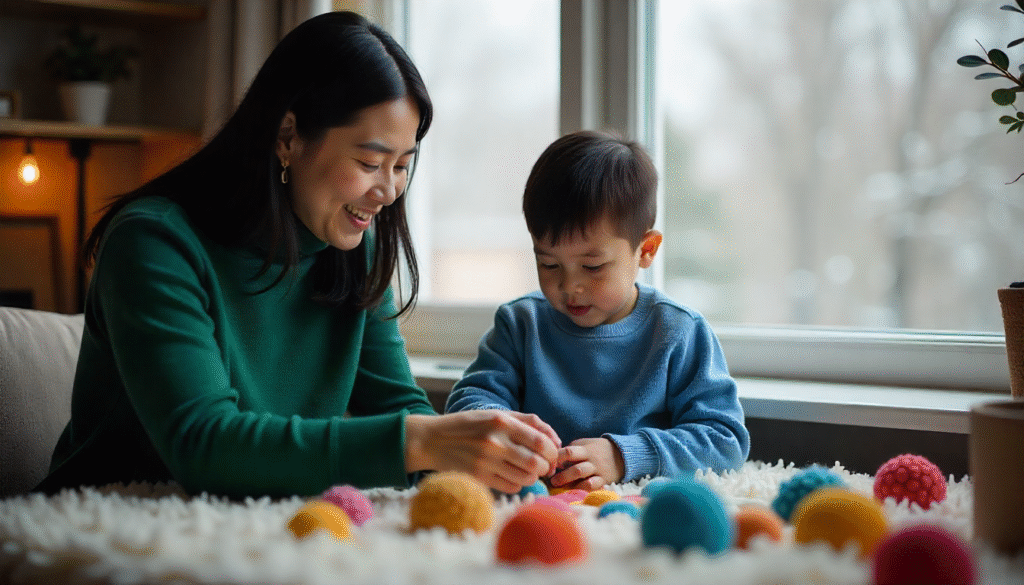Occupational therapy (OT) is not limited to clinic visits or structured sessions with a therapist. In fact, one of the most effective ways to help children develop essential skills is by turning everyday moments at home into fun, skill-building opportunities. Whether your child is working on improving fine motor skills, balance, sensory processing, or self-care abilities, parents can play an active role in reinforcing therapy goals right within the family environment.
Below is a detailed guide to simple at-home occupational therapy exercises that parents can easily include in their child’s daily routine. These activities are playful, require minimal equipment, and can be adapted to different age groups and abilities.
1. Fine Motor Strengthening Activities
Fine motor skills—such as grasping, pinching, and manipulating small objects—are essential for tasks like writing, buttoning clothes, or using utensils. Strengthening these muscles at home can be fun and rewarding.
Playdough Play:
Rolling, squeezing, and shaping playdough helps build hand and finger strength. Encourage your child to make animals, letters, or small balls for a “playdough pizza.”
Bead Threading or Pasta Stringing:
Use large beads or dry pasta with holes for easy threading. This improves finger dexterity and hand–eye coordination.
Clothespin Games:
Ask your child to clip clothespins to the edge of a bowl or string. This simple action strengthens the small muscles of the fingers and improves grip.
Button Boards or Zipper Practice:
Create a small “practice board” with buttons and zippers. This builds independence in dressing and self-care tasks.
2. Activities to Improve Balance and Core Strength
Strong core muscles and good balance are crucial for sitting upright in class, running, and overall physical coordination. These activities can be turned into playful games.
Animal Walks:
Invite your child to imitate animal movements—bear walks (on hands and feet), crab walks (on hands and feet facing upward), or frog jumps. These actions strengthen the core and enhance coordination.
Pillow Pathway:
Arrange pillows or cushions on the floor and encourage your child to walk or jump from one to another. This builds balance and spatial awareness.
Yoga for Kids:
Simple yoga poses like tree pose, downward dog, or child’s pose can improve flexibility, balance, and concentration.
3. Sensory Integration Fun
Some children benefit from activities that help them regulate their sensory responses—whether they seek or avoid certain sensations.
Sensory Bins:
Fill a large container with rice, beans, sand, or water beads. Hide small toys inside and let your child search for them. This promotes tactile exploration and attention.
Swinging or Rocking:
If you have access to a safe swing, gentle swinging provides calming vestibular input and helps with body awareness.
Bubble Play:
Blowing bubbles and chasing them supports oral-motor development, visual tracking, and gross motor movement.
4. Hand–Eye Coordination and Visual Skills
Strong visual-motor skills are essential for reading, writing, and sports.
Ball Games:
Simple tossing and catching games—using balls of different sizes—improve coordination and reaction time.
Scavenger Hunt:
Create a list of household objects and ask your child to find them. This sharpens visual scanning and problem-solving abilities.
Puzzle Play:
Completing jigsaw puzzles develops spatial awareness, planning, and patience.
5. Daily Living Skills (Self-Care)
Independence in everyday activities is a key goal of occupational therapy.
Kitchen Helpers:
Invite your child to help with simple cooking tasks such as stirring batter, kneading dough, or washing vegetables. These actions enhance hand strength and bilateral coordination.
Dressing Practice:
Allow extra time in the morning for your child to practice putting on clothes, tying shoelaces, or fastening buttons.
Sorting and Organizing:
Ask your child to help sort laundry by color or match socks. This improves attention to detail and categorization skills.
6. Tips for Parents to Make OT at Home Successful
- Keep it Fun: Turn exercises into games or challenges. Children are more engaged when activities feel like play.
- Use Everyday Materials: Most exercises need no expensive equipment—use kitchen items, toys, or even recycled materials.
- Be Consistent: Short, daily practice is more effective than occasional long sessions.
- Offer Praise and Encouragement: Celebrate small achievements to build confidence and motivation.
- Collaborate with the Therapist: Ask your child’s occupational therapist for personalized activity suggestions and feedback.
Final Thoughts
Parents are powerful partners in their child’s developmental journey. By integrating simple occupational therapy exercises into daily life, families can accelerate progress, build essential life skills, and create meaningful bonding experiences. These at-home activities not only reinforce therapy goals but also make learning and development an enjoyable part of everyday routines.

